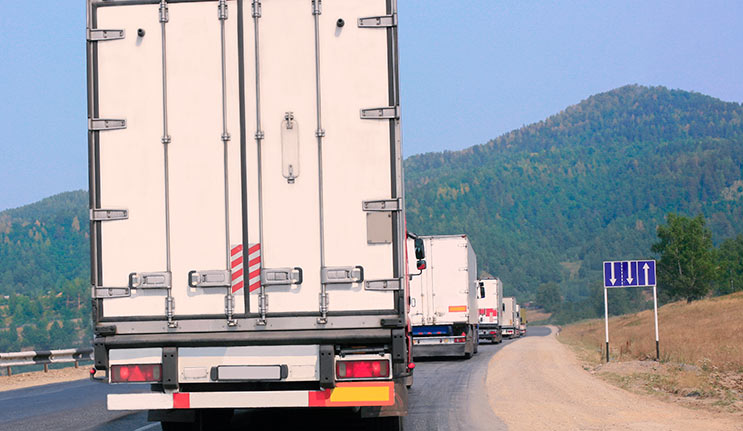When you’re driving at speed on highways anywhere on the planet, one of the biggest safety threats is always the cumbersome trucks and lorries that share the roads with smaller and more nimble passenger vehicles. Not only are they difficult to see past, there are countless stories about these vehicles impacting with smaller ones, simply because the drivers were unaware of the presence of those cars that are not built on a similar scale.
However, recent innovations in the form of artificial intelligence (AI) could be set to make these issues a thing of the past, enabling faster moving and safer roads on a global scale. Massive amounts of money have already been poured into the development of AI technology for usage by everyday consumers, with self-driving cars predicted to be the future of road usage. Considered to be safer and more efficient than having a human behind the wheel, these vehicles operate utilizing a series of sensors that scan within the immediate vicinity and can cast a gaze farther ahead. Assessing the data gathered, the vehicle then can adjust its course and react more quickly than any human can, which in theory makes them far superior and safer users of the road.
In theory, such a move will enable lorries and trucks to think for themselves and be able to better cope with the real-time threats posed by the traffic around them. While the research to make this a reality is still ongoing, a number of research teams are focusing on the concept of ‘platooning’, where trucks will have the capability to group together and proceed to their destination using an algorithm to share data about their surroundings and adjust their movement as one.
Furthermore, through this method of commercial transport, it is less likely that traffic congestion will occur. Drivers of passenger vehicles won’t attempt to get past such ponderous beasts of the road, nor will they attempt to pull off risky maneuverers to overtake them. Instead the platoon can tuck itself away compactly to the side when on motorways, which creates more space for others to safely pass—improving the driving experience for everyone.
Without a real person controlling the wheel, errors typically associated with imperfect human judgement—naturally compromising the safety of the driver, passengers and others on the roadway—are set to be a thing of the past. No longer will trucks collide due to driver fatigue, inattentiveness or human error as embedded computer systems enable vehicles to operate, in theory, almost constantly (aside from refuelling, maintenance and repairs). Such versatility and reliability will also enable more truck platoon journeys to be made at night when roads are less travelled, which in turn means fewer trucks clogging up the highways during the day—the busiest time for traffic.
Right now though, it should be taken into account that the technology in question still needs a lot of refinement before it can be rolled out for everyday usage. As we’ve touched on before, similar self-driving cars are only just now approaching the beginning of their lifespan, and adapting the technology for wider usage will take time to accomplish. However, if passenger and commercial vehicles can be separated on our highways while both proceeding as expeditiously as possible, all stakeholders are likely to benefit.
 Justin is a History graduate from the University of Kent, currently writing on behalf of Truck Locator, a UK-based online marketplace of used trucks and lorries. Having a keen interest in current affairs, Justin is currently focusing on the topic of automation and the massive impact this is set to have on the world in the years to come.
Justin is a History graduate from the University of Kent, currently writing on behalf of Truck Locator, a UK-based online marketplace of used trucks and lorries. Having a keen interest in current affairs, Justin is currently focusing on the topic of automation and the massive impact this is set to have on the world in the years to come.



